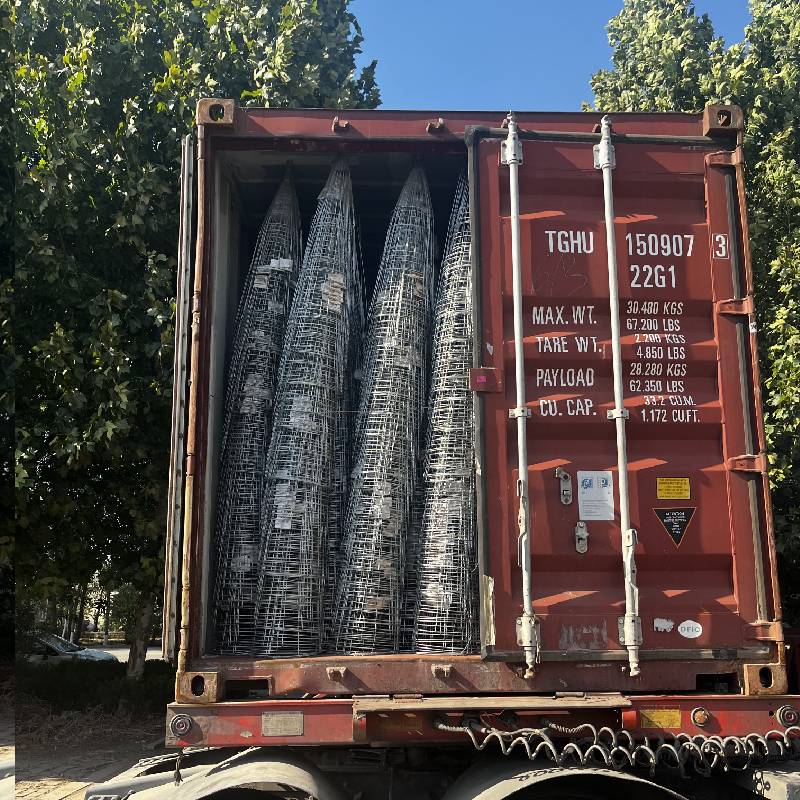
- Mobile Phone
- +8613931874955
- sales@cntcmetal.com
Welded Wire Reinforcement Solutions for Enhanced Concrete Structural Integrity and Durability
Welded Wire Reinforcement for Concrete Enhancing Structural Integrity
In the realm of construction, the demands for stronger, more durable buildings are ever-increasing. One of the essential materials that have emerged to meet these needs is welded wire reinforcement (WWR) for concrete. This innovative solution enhances the structural integrity of various applications, from residential buildings to large-scale infrastructures.
Welded wire reinforcement consists of a grid of steel wires that are welded together to form a mesh. This mesh is then embedded within concrete, providing additional tensile strength. Unlike traditional reinforcement methods, such as rebar, WWR presents several advantages that have made it increasingly popular among engineers and contractors alike.
One significant benefit of welded wire reinforcement is its ability to uniformly distribute loads across the concrete surface. When concrete is subjected to stress, it tends to crack. However, the presence of WWR helps to control this cracking by providing support at critical points. This means that structures reinforced with WWR are less likely to suffer from extensive damage over time, leading to lower maintenance costs and longer life spans.
Moreover, WWR is highly versatile and can be used in a wide array of applications. It is commonly employed in slabs-on-grade, pavements, precast concrete products, and even in walls. This adaptability makes it an appealing choice for different construction scenarios, allowing engineers to tailor their designs to meet specific requirements while ensuring the integrity of the structure.
welded wire reinforcement for concrete

The installation of welded wire reinforcement is also relatively straightforward. Unlike rebar, which can be cumbersome to position and secure, WWR is lightweight and can be easily laid down on forms. It is typically rolled out and cut to size, allowing for quicker and more efficient installation. This efficiency can translate to time and cost savings during the construction process, making projects more economically viable.
Another noteworthy aspect of welded wire reinforcement is its ability to resist corrosion. Many WWR products are coated with materials that enhance their durability and longevity, making them suitable for environments prone to moisture or chemical exposure. This resistance to corrosion is paramount in extending the life of concrete structures, particularly in regions with harsh weather conditions or where salt exposure is common.
Despite its many advantages, it is essential for engineers to assess the specific needs of each project when choosing reinforcement methods. Factors such as load requirements, environmental conditions, and concrete thickness play a critical role in determining whether WWR is the best option. When used appropriately, however, welded wire reinforcement can significantly improve the structural performance of concrete.
In conclusion, welded wire reinforcement for concrete is a vital component in modern construction practices. Its ability to enhance tensile strength, reduce cracking, and provide durability makes it an invaluable material for a wide range of applications. As the industry continues to evolve, incorporating advanced techniques and materials like WWR will be crucial for achieving stronger, more resilient structures that can withstand the test of time. With ongoing innovation, the future of concrete reinforcement looks promising, paving the way for safer and more durable built environments.
share:
-
Why Sacrificial Formwork Is Redefining Underground ConstructionNewsJun.06,2025
-
The Structural Dynamics of Modern Concrete: How Snake Spacers Revolutionize Flexible ReinforcementNewsJun.06,2025
-
Snake Spacers Smart-Lock Concrete Reinforcement with Surgical PrecisionNewsJun.06,2025
-
Snake Spacers: Reinforcement Precision for Modern Concrete ProjectsNewsJun.06,2025
-
Snake Spacers Powering Concrete's Structural DNANewsJun.06,2025
-
Slither into Success: Snake Spacers' Precision Bite for Unbreakable ReinforcementNewsJun.06,2025
-
Sacrificial Formwork: Building Stronger, Faster, and Safer StructuresNewsJun.06,2025



















